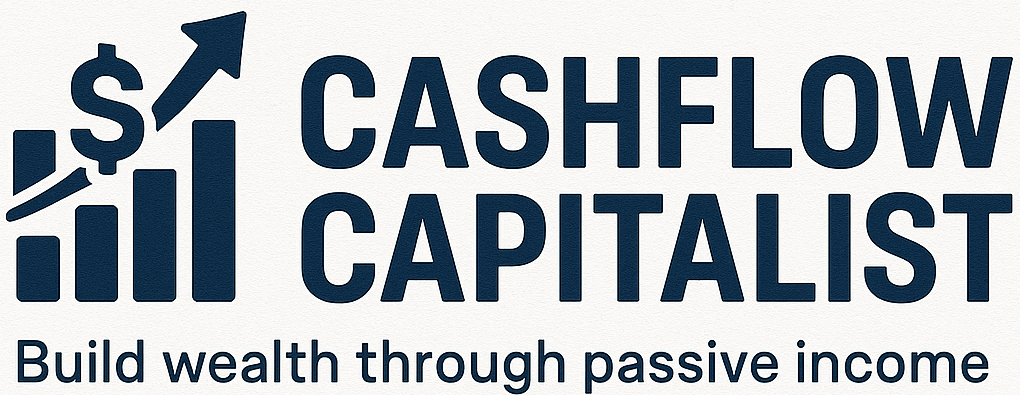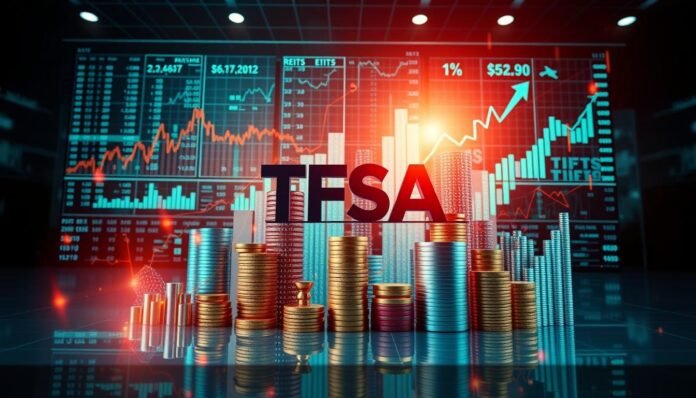How to Balance Stocks, REITs, and ETFs in Your TFSA for Maximum Growth and Stability
A TFSA (Tax-Free Savings Account) is a great tool for Canadian investors. It lets you grow your wealth without paying taxes. To get the best results, finding the right mix of stocks, REITs, and ETFs is key.

Investing in a TFSA means you can earn income without paying taxes. This makes it a good choice for building wealth over time. A balanced TFSA with stocks, REITs, and ETFs can offer steady income and growth. For more on REITs, check out this resource.
Key Takeaways
- Understand the benefits of TFSA investing for tax-free growth.
- Learn how to create a diversified TFSA portfolio.
- Discover the role of stocks, REITs, and ETFs in achieving investment goals.
- Find out how to balance your TFSA investments for maximum returns.
- Explore strategies for long-term wealth creation through TFSA investing.
Understanding the TFSA Advantage for Canadian Investors
Canadian investors have a powerful tool for tax-free investing: the Tax-Free Savings Account (TFSA). It’s popular because of its flexibility and tax benefits.
Tax Benefits of TFSA Investing in Canada
One big advantage of TFSAs is that your growth and withdrawals are tax-free. Unlike RRSPs, you don’t get a tax deduction for contributions. But, the earnings and withdrawals are tax-free. This makes TFSAs great for those who will be in a higher tax bracket later.
Current Contribution Limits and Cumulative Room
In 2025, you can contribute up to $7,000 to a TFSA. If you were 18 or older when TFSAs started in 2009, you can contribute up to $95,000. Knowing your contribution room is key to making the most of your TFSA.

Why Strategic Asset Balance Matters in a TFSA
Having a balanced portfolio in your TFSA is key for growth and risk management. Spread your investments across different types, like stocks for growth, REITs for income, and ETFs for diversification. A balanced TFSA helps you reach your financial goals better.
| Asset Class | Investment Goal | Risk Level |
|---|---|---|
| Stocks | Capital Appreciation | High |
| REITs | Steady Income | Medium |
| ETFs | Diversification | Varies |
For more info on picking the right ETFs for your TFSA, check out this resource.
The Role of Each Asset Class in Your TFSA
To make the most of your TFSA, it’s important to know how stocks, REITs, and ETFs work together. Each one has its own role in building a balanced portfolio. This mix helps grow your money and keeps it stable.
Stocks: Driving Long-Term Capital Growth
Stocks are key in a TFSA, promising long-term growth. They let you own parts of companies, which can grow in value and pay dividends. Canadian dividend stocks are special because they offer tax benefits, but not in a TFSA.
REITs: Generating Steady Income and Real Estate Exposure
REITs (Real Estate Investment Trusts) give a steady income and let you invest in real estate without owning property. They must share most of their income with shareholders, making them good for those looking for income. REITs help make your TFSA more stable.

ETFs: Achieving Cost-Effective Diversification
ETFs (Exchange-Traded Funds) are a smart way to diversify your TFSA. They let you invest in many assets, like stocks and bonds, and trade like stocks. This helps spread out risk and can increase your chances of making money.
Asset Class Performance in Canadian Markets
The performance of stocks, REITs, and ETFs can change based on the economy. Stocks usually offer higher returns over time, while REITs provide steady income. ETFs’ performance varies based on what they hold. Knowing how these work helps balance your TFSA.
| Asset Class | Primary Benefit | Typical Risk Level |
|---|---|---|
| Stocks | Long-term capital growth | High |
| REITs | Steady income and real estate exposure | Medium |
| ETFs | Cost-effective diversification | Varies |
How to Balance Stocks, REITs, and ETFs in Your TFSA
Getting the right mix of stocks, REITs, and ETFs in your TFSA is key. This balance helps grow your money while keeping it stable in a tax-free account.
Determining Your Investment Goals and Time Horizon
First, figure out what you want to achieve with your TFSA. Are you saving for retirement, a house, or your kids’ education? Your goals will shape how you split your investments. For example, long-term goals might let you take more risks, while short-term goals need a safer approach.
Assessing Your Risk Tolerance
Knowing how much risk you can handle is critical. If you’re okay with risk, you might put more in stocks. But if you’re cautious, REITs or ETFs could be better. A good plan helps you make these choices.
Optimal Allocation Ratios Based on Investor Profiles
Each investor is different, so their investment mix should be too. Here are three common ways to split your TFSA:
Conservative TFSA Allocation
Conservative investors might put 30% in stocks, 30% in REITs, and 40% in ETFs. This choice focuses on keeping your money safe and earning steady income.
Balanced TFSA Allocation
A balanced approach could be 40% stocks, 25% REITs, and 35% ETFs. This mix aims for a balance between growth and stability.
Growth-Oriented TFSA Allocation
Growth-focused investors might choose 60% stocks, 15% REITs, and 25% ETFs. This strategy aims to grow your money over the long term.

For example, young investors might put 60% in Canadian and U.S. stocks, 30% in global ETFs, and 10% in cash. Older investors might prefer 40% in dividend stocks and REITs, 40% in bonds, and 20% in CDs.
Finding the right mix for your TFSA depends on your goals, risk comfort, and time frame. Regularly check and tweak your portfolio to keep it on track with your goals.
Building a Balanced TFSA Portfolio: Step-by-Step
Creating a balanced TFSA portfolio is key to growth and stability. Investors in Canada can do this by spreading their investments. This includes stocks, REITs, and ETFs.
Selecting Quality Canadian Dividend Stocks for Your TFSA
When picking Canadian dividend stocks, look for companies with a stable dividend history. Also, they should be financially strong. Some top picks include:
- Royal Bank of Canada (RY)
- Toronto-Dominion Bank (TD)
- Enbridge Inc. (ENB)
These companies are known for consistent dividends. They’re great for a TFSA focused on income.
Choosing the Right Canadian REITs for Stable Income
Canadian REITs offer steady income through rental properties. Look for REITs with a wide range of properties and a stable dividend history. Some good options are:
- RIOCAN REIT (REI.UN)
- Chartwell Retirement Residences (CSH.UN)
These REITs give you a piece of the Canadian real estate market. They also provide regular income.
Picking Complementary ETFs for Global Diversification
ETFs are a smart way to diversify your TFSA. For global exposure, choose ETFs that follow international indices. Some good ones are:
- Vanguard FTSE Developed All Cap ex North America Index ETF
- iShares Core MSCI EAFE IMI Index ETF

Example Balanced TFSA Portfolios for Different Investment Goals
A balanced TFSA portfolio can fit various goals. Whether you want income, growth, or both, here are examples:
| Investment Goal | Stocks | REITs | ETFs |
|---|---|---|---|
| Income Focus | 40% | 30% | 30% |
| Growth Focus | 60% | 20% | 20% |
| Balanced | 50% | 25% | 25% |
Adjust the mix to fit your goals and risk level. This way, you can tailor your TFSA to your needs.
Maintaining and Optimizing Your TFSA Portfolio
Optimizing your TFSA investments means using smart strategies for rebalancing and managing risk. A well-kept portfolio is key to reaching your financial goals in Canada.

Quarterly vs. Annual Rebalancing Strategies
Investors face a choice between rebalancing their TFSA portfolios every quarter or once a year. Quarterly rebalancing can help manage risk more often. On the other hand, annual rebalancing might save on transaction costs. The right choice depends on how much risk you’re willing to take and your investment goals.
Avoiding Sector Overexposure and Concentration Risk
It’s important to avoid too much focus on one sector in your TFSA. Spreading your investments across different types, like stocks, REITs, and ETFs, can reduce losses. Regular checks on your portfolio can spot and fix any imbalances.
Maximizing Tax-Free Compounding Through Strategic Contributions
TFSA investing in Canada offers a big advantage: tax-free compounding. By making smart contributions, you can grow your TFSA wealth. Knowing the contribution limits and using catch-up contributions can help maximize this benefit.
Common TFSA Investment Mistakes to Avoid
- Failing to rebalance the portfolio regularly
- Overexposure to a single sector or asset class
- Not maximizing contribution limits
- Ignoring the impact of fees on investment returns
Avoiding these common errors and sticking to a disciplined investment plan can lead to long-term success in your TFSA.
Conclusion
Canadian investors can boost their TFSA’s power by using a tfsa investment diversification plan. This plan should mix stocks, REITs, and ETFs. It’s key for reaching long-term financial goals.
A diversified TFSA portfolio can lower risks and grab chances. Knowing tfsa investing rules and using tfsa smart allocation can boost returns.
To get the most from tfsa yield optimization, check and adjust your portfolio often. This keeps it in line with your goals and risk level. It’s a strong base for growing wealth over time.
By sticking to a tfsa investing guide2025, Canadian investors can build a strong TFSA. It will help meet their financial goals.
FAQ
What is the ideal asset allocation for a TFSA?
The right mix of assets in a TFSA depends on your risk level, goals, and how long you plan to invest. Think about these factors to find a balance that works for you.
How do I determine my risk tolerance for TFSA investing?
Your risk tolerance is based on your age, goals, and how you feel about market ups and downs. Younger investors might take more risk, while older ones might focus on keeping their money safe.
What are the benefits of including REITs in my TFSA?
REITs offer a steady income and a way to invest in real estate. They add value to your TFSA by providing income and diversifying your investments.
How often should I rebalance my TFSA portfolio?
How often to rebalance depends on your strategy and the market. Rebalancing every quarter or year helps keep your portfolio balanced and avoids too much focus on one area.
What are the tax benefits of TFSA investing in Canada?
TFSAs in Canada grow and withdraw tax-free. This makes them a great choice for Canadians looking to invest without worrying about taxes on their earnings.
Can I hold Canadian dividend stocks in my TFSA?
Yes, you can hold Canadian dividend stocks in your TFSA. They offer a chance for long-term growth and income.
How do I maximize tax-free compounding in my TFSA?
To get the most from tax-free compounding, make smart contributions and keep your portfolio balanced. Avoid putting too much in one area and keep fees low.
What are some common TFSA investment mistakes to avoid?
Mistakes include not diversifying, focusing too much on one sector, and not rebalancing. Also, watch out for contribution limits and avoid over-contributing.
How do I choose the right ETFs for my TFSA?
Look for ETFs that offer good diversification, low fees, and match your investment goals. Choose ones that fit well with your current portfolio.
What is the role of ETFs in a TFSA portfolio?
ETFs help diversify your TFSA at a low cost. They give you access to different assets, sectors, and regions, helping to balance your portfolio.




